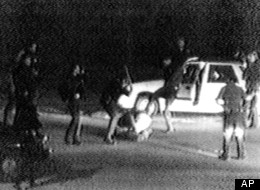 The Supreme Court ruled 5-4 on Monday that police could collect DNA from people arrested but not yet convicted of serious crimes. The decision allows police to take a quick swab inside a suspect’s cheek when he’s arrested for a rape or a murder.
The Supreme Court ruled 5-4 on Monday that police could collect DNA from people arrested but not yet convicted of serious crimes. The decision allows police to take a quick swab inside a suspect’s cheek when he’s arrested for a rape or a murder.
Twenty-six states already collect DNA from those arrested for felonies or other serious crimes and upload it into a national database run by the federal government. The purpose is, of course, to find matches with unsolved crimes.
The court found that swabbing for DNA was no different under the Fourth Amendment than taking fingerprints. Justice Antonin Scalia, in an unusual coalition with three of the liberal judges, wrote an angry dissent, using the all-purpose slippery-slope argument that the decision will lead to an increased use of DNA testing in violation of the Constitution’s protection against unreasonable searches.
It’s the same argument used against background checks for gun buyers at private sales. Pretty soon all gun owners could be registered, and then all guns could be confiscated. But the facts regarding swabbing for DNA don’t support that argument.
The portion of DNA that gets stored in law enforcement databases doesn’t reveal anything about one’s particular genetic traits or propensity for disease, despite what the conspiracy theorists assert. It’s simply an identifier, similar to fingerprinting —but much more accurate. Also, DNA is stored by barcode, not by name, with criminal penalties for anyone who violates the rules — just like any forensic evidence used in countless trials in our country.
Last year, Congress passed the Katie Sepich Enhanced DNA Collection Act, which President Obama signed in January. It creates a grants program to help states pay for the expanded system. Katie’s parents have led that effort through the organization DNA Saves. She was brutally raped and strangled at the age of 22 a decade ago. By the time her killer was identified through DNA evidence, he had committed other crimes.
Because DNA is so reliable, it has exonerated hundreds of innocent people and taken many murderers and rapists off the streets. It would have been a crime if the Supreme Court had ruled otherwise.





